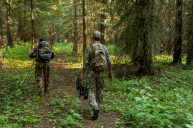Come January, most states are entering late-season hunts featuring icy weather and frigid temperatures. Folks familiar with these conditions might feel like they're in A Christmas Story when they can't put their arms down due to the sheer amount of layers they're wearing. An upside to these hunts is that meat spoilage becomes a minor concern, but you may get hypothermia while you're out there packing out your meat. However, all of this can be avoided by bowhunting in Arizona come January.
Hunting the late season in Arizona is a great way to escape winter hunting conditions in the midwest and northern Rocky Mountains. As a result of the state's lower latitudes, not only will the weather be lovely, but late December and into January is when the rut actually takes place. Mild weather conditions and lots of deer activity makes bowhunting in Arizona a fantastic winter getaway. If you're looking to bowhunt rutting deer in mid-January in Arizona, here's what you need to do to prepare.
Gear for Bowhunting in Arizona

Of course, if you're planning on bowhunting, you'll need a bow. Traditional, recurve, and compound bows are all fantastic options for the close-range encounters you'll run into in Arizona. Keep in mind that the dense, spiky brush in Arizona's deer habitat makes long-range shots difficult, so traditional equipment may be the way to go to decrease your pack's weight and take effective shots.
Bowhunters can expect the weather to be in the 30s in the mornings and into the 60s in the afternoons. This time of year can be incredibly dry, so remember to pack extra water and leave the wet weather layers at home. Lightweight, breathable layers will keep you comfortable in the backcountry, and tough pants will keep cactus spines, jumping cactus, cholla, and other sharp plants away from your skin. Bringing a face cover will help keep your face from getting sunburnt and keep you camouflaged, too. Lightweight boots will help you cover miles in tough country without feeling like you're dragging around giant insulated boots.
Arizona Archery Buck Tags
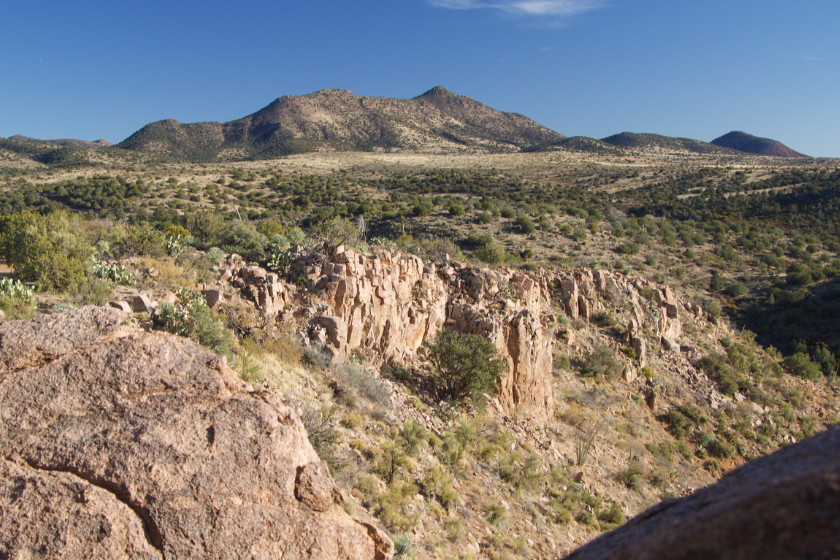
Gabriela Zaldumbide
Arizona's buck tag structure is quite simple. Their buck tags are not species-specific, so you're able to take a shot at any buck within bow range. However, I'd recommend knowing the differences between mule deer and coues deer anyways. You can pick buck tags up over the counter at outdoor retailers like Cabela's or at local state game agency offices. For residents, archery deer non-permit tags cost $45. For non-residents, the tag costs $300. These tags are good for one calendar year and Arizona Game and Fish requires hunters to report their harvests within 48 hours of the deer dying. More details about this tag structure can be found in Arizona's hunting regulations pamphlet.
Where to Hunt Bucks in Arizona
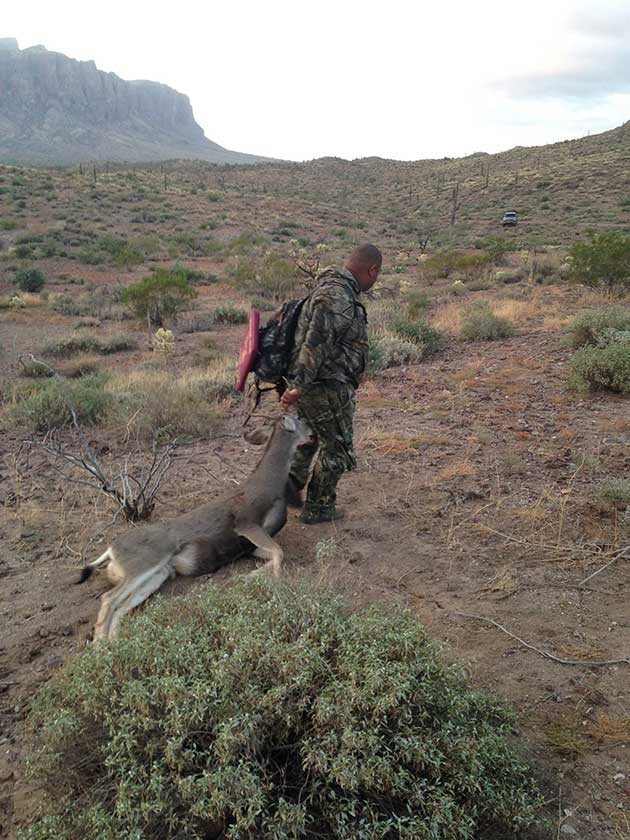
Bruce Gifford/Getty
Arizona is unique in that some units are archery-only. These are great places to try and fill an archery buck tag. Arizona's hunting regulation brochure outlines each archery-only unit, the season dates for each unit, and whether or not an antlered deer can be taken in that unit. Some locations allow hunting for both antlered and un-antlered deer. It's important to check your hunting spot's regulations so you know whether or not you're hunting legally.
Personally, I enjoy bowhunting in southern Arizona's archery-only units. Chasing deer between saguaro cacti can be the hunt of a lifetime whether or not you fill the tag. Watching a blazing southwestern sunset drop behind the mountains while glassing for bucks is an exceptional experience. Plus, Tucson has an In-N-Out, which makes for a tasty post-hunt dinner.
Coues Deer vs. Mule Deer
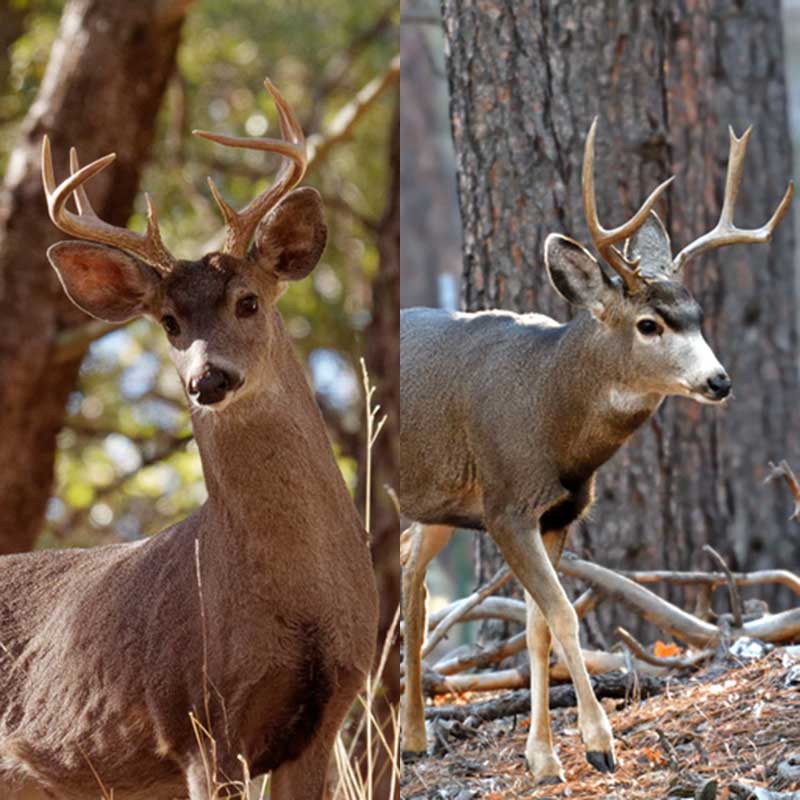
Coues deer (L), mule deer (R)
When hunting bucks in Arizona, it's common to see both mule deer and coues deer living in the same habitat. Although the state doesn't require hunters to distinguish between the two for the archery buck tag, it's fun and informative to know what species you're looking at. Mule deer can usually be distinguished by their forked antlers. They're also much larger than coues deer and are darker in color. Their large, heavy bodies are easier to spot through your binoculars, too. Their tails are another way to know you're looking at a mule deer. Mule deer have thin, stringy tails with black tips. They don't flip them up the same way a whitetail or coues deer will when alarmed, either. Coues deer are technically very small whitetails; it's a subspecies of the more familiar whitetails that call the rest of the country home. They don't have forked antlers; instead, they have short, stout, rounded whitetail-like antlers. Coues deer also have very small bodies, usually weigh less than 100 pounds, and are known for being nimble, sneaky, and elusive. They also have that characteristic whitetail tail that flares up in a white flash when they're alarmed.
Spot and Stalk Hunting
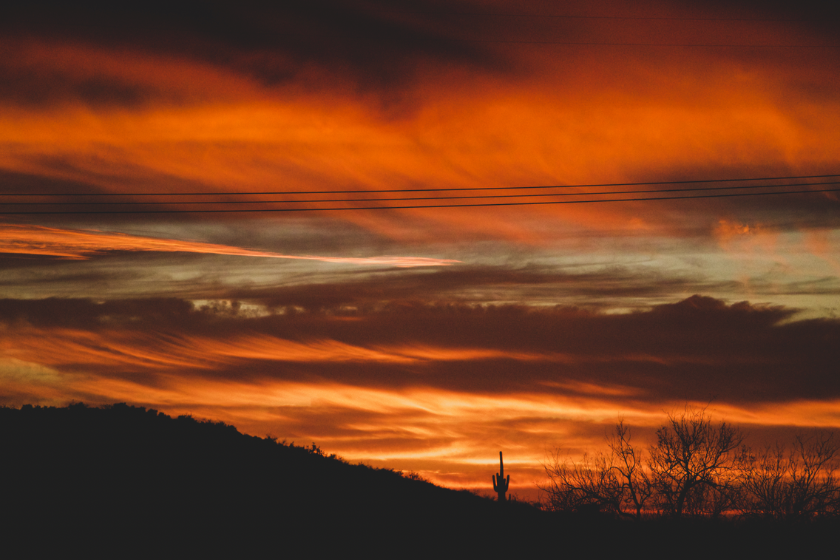
Gabriela Zaldumbide
The best way to hunt bucks in Arizona is by using spot and stalk hunting techniques. These southwestern deer live in some gnarly, steep, sharp country, making it incredibly difficult to get closer than 50 yards. However, dedicated bowhunters are up to the challenge. When I hunted in Arizona, I saw tons of bucks. Seriously. There were way more bucks than I was used to seeing in my home state of Colorado. However, it was incredibly hard to get close to them. Loud vegetation, harsh sun, and open terrain made sneaking up on a wary buck tricky. However, seeing so many animals meant I had multiple opportunities to practice spotting and stalking my prey, even though I had very limited shooting opportunities.
Based on my experience hunting there, the best way to begin bowhunting bucks is by setting up in a good glassing spot you've scouted out before daylight. Then, you glass the morning away. Hopefully, you'll get lucky and spot a deer within a mile or two from you. This is when you can make your move. I usually mark the spot I think the deer is on my onX map, turn on the point-line feature so I can track how far away I am from it, and slowly close in. I'm very careful to be as silent as possible when stalking deer, but it can be tricky with all of Arizona's dry, crunchy vegetation. Once you get within bow range of your mule deer or coues deer that you've been stalking, get ready to draw your bow. Don't do it when the buck (or another deer that's nearby) is looking at you, otherwise, you're almost guaranteed to blow your hunt. If a doe sees you, she'll either stomp or run, causing the buck to become alarmed and likely leave the area, too. However, if the buck presents a shot and you feel confident in your shot placement, then it's time to seal the deal. Trust me, when it all comes together, punching your buck tag in Arizona feels pretty darn good.
Bowhunting in the arid desert in winter is an excellent way to spend some Christmas money. If you're looking for a hunting getaway after the holidays, Arizona is the place to do it, especially if you're proficient with your bow. Even if your tag goes unfilled, spending time among the saguaros in an unforgettable part of the U.S. will be well worth your time and money.



